A restaurant’s coffee should never be an afterthought. Why? Experts say a strategic coffee program can offer a huge mark-up and be extremely profitable for a restaurant or cafe, while delivering a high-quality cup that customers expect.
Natalie Webb, founder of Cafecita, a Los Angeles-based coffee roaster, which supplies coffee to restaurants, says, “The quality of a restaurant’s coffee tells customers a lot about the quality of the restaurant. People go to restaurants because they like the coffee, so it’s really something that can make or break a restaurant. And the good news is that it doesn’t cost a lot to step up a restaurant’s coffee program.”
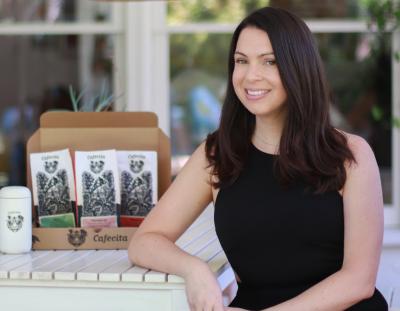
Webb believes the benefits of carrying good coffee far outweigh the minor difference in price between cheap coffee and specialty coffee, and it’s “one of the smallest adjustments a restaurant can make to gain regulars and up their image.”
RELATED: How a Tea Program Can Boost Your Revenue
Jacob P. Chestnut, an assistant professor at the Cornell University School of Hotel Administration in New York, notes besides the obvious financial benefit of upgrading a restaurants coffee offerings, a high quality and consumer-centric coffee program can increase a customer’s affinity for a restaurant in ways that directly translate to the bottom line. “For instance, issues around social sustainability and ethical consumerism are particularly well posed in terms of coffee,” explains Chestnut. “This presents an opportunity for restaurants and other retailers to establish transparency in sourcing, thereby credibly signaling to consumers their commitment to these ideals. In this way, consumers not only feel good about buying from you, but they also feel good about themselves when buying from you.”
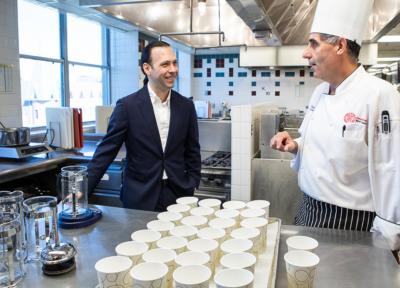
Coffee by the Numbers
Webb says coffee can be extremely profitable while still being high end. “We offer our single origin, organic, Fair Trade Certified specialty coffees for $10 to $12 a pound, which translates to about 50 cents per 12-ounce cup of coffee,” she says. “Our clients sell the coffee anywhere from $3 to $4. Plus, for each pound of coffee sold, we donate five percent of our proceeds to women’s nonprofits. So, our customers are making a great profit while making a social impact. It’s a win-win.”
RELATED: Don't Be Fooled by 'Eco-Friendly' Packaging
Aaron Guenther, Vice President of Sales for Torke Family Coffee Roasters in Sheboygan, Wis., says restaurants can “up their cup” for a mere four cents a cup. “Upgrading your coffee does not have to be expensive,” he explains. “Specialty grade coffee might cost $1.49 per brew and organic and Fair Trade Certified might be $1.69. This would equate to four cents per cup for an upgrade, or about two percent.”
Guenther advises restaurants to consider sweet pairings for sweet rewards, to make an impression until the last sip. “To drive coffee sales, consider a $5 pairing,” he suggests. “Guests may not go for the dessert, but they will go for a $5 dessert and coffee pairing. The serving sizes can be small or utilitarian, like a biscotti. What you're looking for is a reason to push a guest from undecided to a yes.”
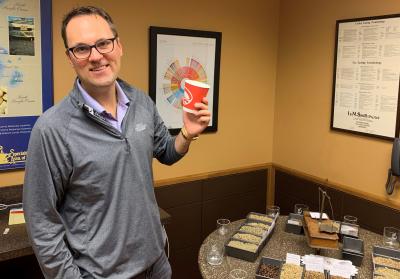
Restaurants + Coffee: Best Practices and Tips
At Makers & Finders in Las Vegas, they’re serving up an array of incredible coffee-based drinks, in addition to Latin comfort food. Their espresso bar and tea bar menu features inventive offerings, including:
- Bulletproof – Left Coast MCT oil, Kerrygold Butter with filtered coffee
- Deconstructed CBD Latte – 1.7 ounces of CBD elixir, espresso and lemon agave
- Nitro Cold Brew – House made and infused, served on tap
- Kalita Pour Over – Hand poured and made to order for customers
Josh Molina, Founder and CEO of Makers & Finders – who believes coffee margins are strong – says, “Good quality, well-executed coffee and espresso are becoming an expectation from guests when visiting a bar or restaurant.”
Molina suggests incorporating a creative specialty coffee menu, like the one at his restaurant, but advises operators to consider:
- Location of the Espresso Machine: “Many times, you'll find espresso machines in a server station or some secluded area,” says Molina. “Incorporating the espresso machine at the bar or service well can increase the speed and consistency of the espresso beverages.”
- Cross-Utilization of Syrups – Flavors Used in Cocktails Can Be Used in Coffee Drinks: “Utilizing house made syrups for specialty lattes is a cost cutting measure that is not very time consuming, especially if we are cross-utilizing the syrups into other beverages such as cocktails,” shares Molina.
- Stocking All the Right Tools: “Make sure you have volumetric tools like a jigger for syrups, a volume-measured milk pitcher and espresso grinders that auto-dose – all sure shot ways of maximizing profitability with coffee,” notes Molina.
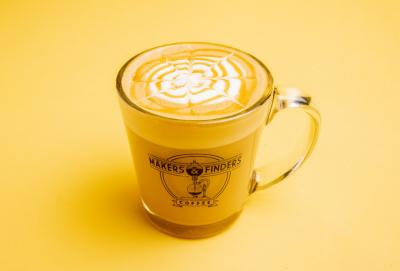
Casey Hunt, Partner and Co-Founder of Alley & Vine in Alameda, Calif., says their coffee strategy is to include it in their “Steps of Service” in two key ways: visually, by listing it on the menu with all the possible options (milk options, etc.), and by verbally offering coffee to every table to end their meal. “This gives guests two opportunities to order coffee, and most do so because of it,” Hunt says.
Hunt explains that it’s also important to partner with a great coffee company or roaster. For their restaurant, they partnered with Mr. Espresso, a specialty coffee supplier in Oakland, Calif. “Not only do they have an awesome story as a business – and the people who work there make our jobs so much easier – but the product they supply is top-notch and makes a huge difference in the cup,” shares Hunt. “They also provide excellent on-site staff training, which we feel enhances our guest experience.”
Luigi Di Ruocco, Vice President of Mr. Espresso, says there are several things a restaurant should consider when selecting a coffee partner or supplier. “Speak with at least a few different coffee providers and ask them about their coffee programs for restaurants,” he says. “Get familiar with what they offer as far as equipment packages, repair and maintenance, staff training and overall coffee program guidance.”
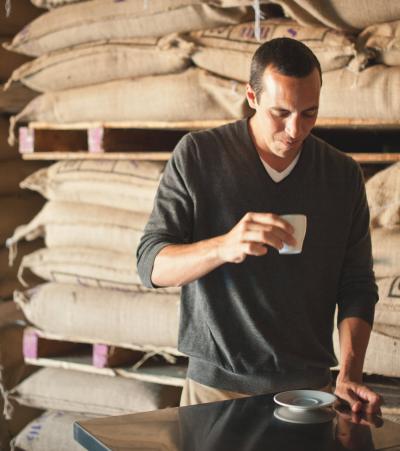
Di Ruocco believes restaurants should choose a coffee supplier that provides a comprehensive level of support, and one where there’s good chemistry between restaurant and supplier. “Ask for a few references as well, so you can see how well they follow through on their promises. Make sure you love their coffee, too,” he says.
Your Coffee Strategy: Consistency, Scalability
Professor Chestnut of Cornell University notes that when it comes to implementing a coffee strategy, don’t run before you walk. “Spending thousands of dollars on machinery that produces drinks that your customers might not care about, and that your employees don’t know how to make, seems ill advised,” reveals Chestnut. “Don’t implement a coffee program that lacks consistency and scalability. There’s a big difference in operational complexity between making one amazing cup of coffee and serving two hundred in an hour.”
Chestnut also believes that the simple path may be the best route. “It’s easy for anyone to make an extremely good cup of coffee with only high-quality beans, a press pot and ‘good water,’” he explains. “Blind tastings conducted at the School of Hotel Administration at Cornell University found that water quality [hardness and pH] was as impactful on the perceived quality of coffee produced as was the q-score of beans used. In fact, medium quality beans [90 to 92 points on a 100-point coffee review scale] brewed with ideal water were overwhelmingly preferred to high quality beans [96+ points] brewed with ‘bad water.’ Small tweaks like this can lead to a much-improved consumer experience at almost no cost to the restaurant.”
Overall, in terms of improving the quality of coffee at a restaurant, Di Ruocco of Mr. Espresso reminds businesses that coffee may be the last thing a guest tastes before they leave a restaurant, and it lingers on their palate long after they've left. “Try and make it a positive memory,” he says. “Think about how the coffee pairs with the flavors offered in your desserts – avoid using a coffee that clashes. Don't automatically try and serve the style of coffee you get at the trendy local coffeehouse; think about the style of coffee that is appropriate for your restaurant and your cuisine.”
Follow us on Facebook and Instagram to stay up-to-date on the latest industry news.
